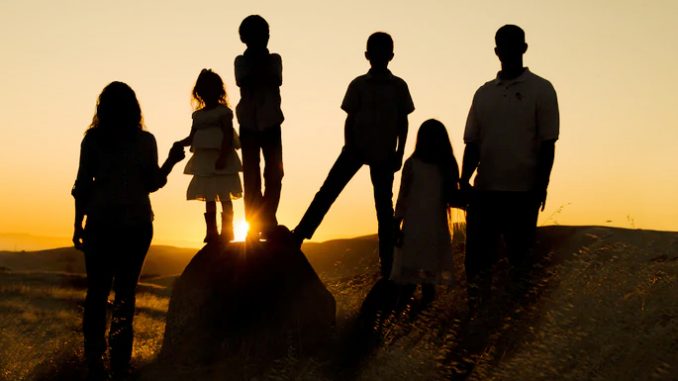The Mystery of the Two Tombs

The Journey of Mary Magdalene to Resurrection Faith
April 5, 2018
Paul VI ‘Could Be Patron Saint of the Unborn’
April 5, 2018
By Trent Horn, Catholic Answers, April 04, 2018
 Last month I was blessed to lead forty-five pilgrims through the Holy Land and then spend Holy Week in Jerusalem. At 5 a.m. on Easter morning I woke up and began my trek to the Church of the Holy Sepulcher that is built over the site of Jesus’ crucifixion and his empty tomb. As I walked through the quiet, narrow streets of the Old City I thought of the women in the Gospels who walked this same path before the sun rose and how I was walking in the footsteps of countless other Christians who wanted to see where the Lord conquered death.
Last month I was blessed to lead forty-five pilgrims through the Holy Land and then spend Holy Week in Jerusalem. At 5 a.m. on Easter morning I woke up and began my trek to the Church of the Holy Sepulcher that is built over the site of Jesus’ crucifixion and his empty tomb. As I walked through the quiet, narrow streets of the Old City I thought of the women in the Gospels who walked this same path before the sun rose and how I was walking in the footsteps of countless other Christians who wanted to see where the Lord conquered death.
Later that day, I told our guide about my visit and he commented on how Protestants rarely do what I did. They visit the Holy Sepulcher, but only for a few minutes. They prefer to spend most of their time worshiping the risen Jesus at a site called the “Garden Tomb” located just north of the Old City.
But how could Jesus have two tombs? Which one is the real “empty tomb” of Christ?
Some skeptics in the modern period doubted the Church of the Holy Sepulcher contained Christ’s tomb or the remains of Calvary because the Holy Sepulcher is located within the walls of Old Jerusalem. That’s problematic because the Gospels say Jesus was taken outside the city, and Hebrews 13:12 even says that Jesus “suffered outside the gate” or the entrance of Jerusalem. This motivated nineteenth-century scholars like Charles Gordon to claim that a rocky formation north of the city’s Damascus Gate was probably the true site of Calvary.
The area contained several tombs and its main rock formation resembled a skull, which matches the Gospel’s description of the area being called Golgotha, or “the place of the skull” (Matt. 27:32-33). Researchers also found what appeared to be relics of a cistern and other elements of a garden, which would corroborate John’s description of Jesus’ tomb lying within a garden (John 19:41-42).
It’s no coincidence that Protestant scholars were the ones who promoted this new location for Jesus’ burial. They preferred the quiet, tranquil environment of the Garden Tomb to the bustling, overtly Catholic elements of the Holy Sepulcher. Gordon said, “It is very nice to see it so pain and simple, instead of having a huge church built on it . . . I do not care for the sites. I like the Temple, Wailing Place, my Golgotha, the Mount of Olives, and the Valley of Kidron; I like the places, not the sites” (emphasis in the original).
Over the decades, the Garden Tomb became a place where Protestants could honor Christ’s resurrection absent Catholic elements of worship like altars, incense, oil lamps, chanting, and the celebration of Mass. But Protestants who promoted the Garden Tomb didn’t just give up elements of Catholic worship; they gave up their historical connection to the Lord’s death and resurrection. The custodians of the Garden Tomb seem to admit this, because their website says, “the question as to whether this is the same tomb in which the Messiah was buried is ultimately unimportant. What is important is that visitors to this garden have an encounter with the living Messiah today.”
But for pilgrims who make significant investments to travel across the world to follow in Jesus’ footsteps, it is important. They should be able to know if Jesus ever set foot in a certain place or if events attributed to him (especially one as central to Christianity as the Resurrection) actually took place there.
In 1986, Israeli archaeologist Gabriel Barkay published a paper that showed, among other things, that the Garden Tomb was carved seven or eight centuries before Christ was born. But this contradicts the Bible’s description of the tomb being a new one that had been built for Joseph of Arimathea (John 19:41, Matt 27:60).
Other parts of the area, like the cistern for the garden, have been dated to the time of the Crusades. Moreover, the skull-like appearance in the rocks has noticeably eroded since its discovery in the nineteenth century, so there’s reason to doubt it was present 2,000 years ago.
The Garden Tomb’s location in relation to the walls of Jerusalem does not give it more authenticity, either. It is located outside the walls of the modern old city of Jerusalem, but those walls were built during the Ottoman Empire. The walls of first-century Jerusalem, however, were closer to the site of the Jewish temple. Archaeologists have shown that the Church of the Holy Sepulcher lies outside these ancient, first-century walls.
Finally, Christians have continuously lived in the Holy Land, so we should listen to their testimony. They went on pilgrimages to holy sites just like we do today—so where did these first Christians think Christ was buried?
According to the fourth-century Church historian Eusebius, the Roman emperor Hadrian wanted to stamp out Christian worship so he erected pagan temples over Christian holy sites. One of those temples was dedicated to the deity Aphrodite (or Venus in some accounts) and was built in the second century over the site of Christ’s tomb. But instead of stopping devotion, the temples had the unintended effect of permanently marking the location of Christ’s empty tomb for future believers.
One of those believers was the converted Emperor Constantine. Along with the support of his mother Helena, he tore down the older pagan temple and built the Church of the Holy Sepulcher over the traditionally recognized site of Christ’s burial. This tradition was confirmed when workers uncovered in the foundations of the pagan temples stones that had Christian graffiti on them.
One of the oldest, which is still in the possession of the Armenian Orthodox Church, contains an ancient drawing of a boat with the words Domine Ivimus or “Lord, we came.” Eusebius lived at the same time as Constantine, and he provides this beautiful summary of what happened when workers discovered Christ’s tomb beneath the limestone of these pagan temples:
As soon as the original surface of the ground, beneath the covering of earth, appeared, immediately and contrary to all expectation, the venerable and hallowed monument of our Savior’s resurrection was discovered. Then indeed did this most holy cave present a faithful similitude of his return to life, in that, after lying buried in darkness, it again emerged to light, and afforded to all who came to witness the sight, a clear and visible proof of the wonders of which that spot had once been the scene, a testimony to the resurrection of the Savior clearer than any voice could give.
https://www.catholic.com/magazine/online-edition/the-mystery-of-the-two-tombs




